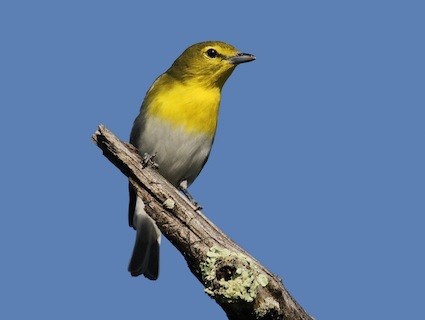On September 20th and 21st, Millersville University students were involved in collecting and recording data for the Lancaster County Conservancy Climber’s Run BioBlitz. A BioBlitz is a complete bio-inventory of all species found in a defined area, in this case the Climber’s Run Preserve. Educators, Scientists and the General Public alike, work together to find and document different species. Below are some of the results from the mammal survey effort.
Monthly Archives: September 2014
Seeing Our First Migratory Birds
On the morning of September 16th on the Millersville Biological Preserve, we got to see our first species of migratory birds making their way through campus. We saw small flocks of red-eyed vireos, black-throated green warblers, eastern wood pee-wees, Yellow-throated vireos (picture below by Ryan Schain, MA, Groveland, May 2012), chestnut-sided warblers as well chimney swifts flying overhead. We also got good looks at cedar waxwings.

Beginning of 2014 Fall Bird Walks
Today we had our first bird walk for the 2014 Fall season. We are beginning to see blackbirds flock up, but we did not see anything in regards to flocks of neotropical migrants. The following is a list of birds we did see: Tufted Titmouse, Chickadee, Gray catbird, Great Egret, Northern mockingbird, Red-eyed vireo, Carolina wren, Common grackle, Red-bellied woodpecker, Downy woodpecker, Northern flicker, Red-winged blackbird, American robin, Northern cardinal, American crow and Hairy woodpecker.
Interestingly, Dr. Jean Boal did find a very young Cedar Waxwing outside of a late season nest.

Conservation Biology Class & Mammal Trapping
Today, students from the Conservation Biology Class, with guidance from myself and Professor Emeritus David Zegers, set up small rodent traps and remote cameras at the new Climber’s Run Preserve in Lancaster County, Pennsylvania. This was part of a Service Learning project with the Lancaster County Conservancy (LCC) Bio-inventory Survey Effort for Climber’s Run Nature Preserve. The civil service performed by these students will help the LCC determine the diversity of mammalian fauna found on their new property.




